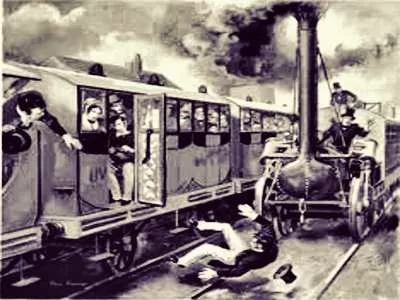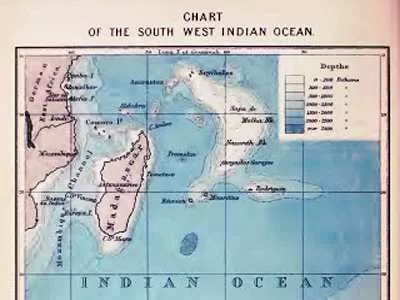The story of the Dodo (Raphus cucullatus) is a poignant reminder of the fragility of life and the devastating impact humans can have on the natural world. This flightless bird, native to the Mascarene Islands, particularly Mauritius, became a symbol of extinction due to its tragic fate.
The Dodo’s demise is intertwined with significant historical events, including the early days of railway travel and the evolving understanding of species extinction in the Victorian era.
A Fateful Encounter on the Railway
On September 15, 1830, a momentous event in transportation history occurred: the opening of the Liverpool to Manchester Railway, the first inter-city railway in the world. Among the passengers were two prominent figures: Mr. William Huskisson, a Member of Parliament, and the Duke of Wellington, the Prime Minister. Their relationship had been strained due to Huskisson’s resignation from Wellington’s Cabinet over parliamentary reform in 1828.

During a stop at Parkside, near Newton-le-Willows, both men stepped off the train to stretch their legs. In a bid to reconcile, Huskisson approached Wellington, but as they conversed, disaster struck. The locomotive, Stephenson’s Rocket, was approaching on the adjacent track. In a panic, Huskisson attempted to climb into the Duke’s carriage but instead fell onto the tracks. The train ran over his leg, resulting in horrific injuries. In his final moments, Huskisson uttered, “I have met my death – God forgive me.” He became the first person in history to be killed by a train, a tragic event that underscored the dangers of rapid technological advancement.
Tragic Fate of the Dodo
The Dodo’s extinction story began long before the railway tragedy. Discovered by European sailors in the late 16th century, the Dodo was a large, flightless bird that stood about three feet tall and weighed up to 50 pounds. Its lack of fear of humans made it an easy target for hunters. The Dodo lived on an isolated island with no natural predators, which contributed to its trusting nature. Unfortunately, this trust would lead to its downfall.

Sailors initially found the Dodo’s meat unpalatable, preferring doves and parrots. However, as they learned to prepare the Dodo, they began to harvest the birds in large numbers. By the early 18th century, the Dodo was already facing extinction. The Dutch left Mauritius in 1712, and the French took control, but there were no further mentions of the Dodo in their records, indicating that the bird had likely vanished by that time.
Role of Invasive Species
The introduction of invasive species played a significant role in the Dodo’s extinction. Rats, dogs, and cats brought by humans preyed on Dodo eggs and competed for food resources. The destruction of the Dodo’s habitat further exacerbated the situation, leading to a rapid decline in their population. In less than a century after humans arrived on the island, the Dodo was gone.

Hugh Edwin Strickland, a geologist and naturalist, co-authored the influential book The Dodo and its Kindred in 1848, which detailed the history and biology of the Dodo and other extinct birds. Strickland and his co-author, A.G. Melville, meticulously examined historical records and physical remains of the Dodo, confirming its existence and documenting its tragic fate. They described the Dodo as a “massive clumsy bird” with a slow waddling motion, comparing it to a newly-hatched duckling. Their work was groundbreaking, as it challenged the prevailing Victorian belief in the immutability of species.
Victorian Perspective on Extinction
In the 1840s, the concept of extinction was difficult for many Victorians to grasp. The prevailing scientific view, influenced by religious beliefs, held that God had created each species in a fixed form. The idea that an entire species could cease to exist contradicted this doctrine. Strickland and Melville’s work was crucial in shifting this perspective, as they provided evidence of the Dodo’s existence and its tragic extinction.
The Dodo’s Latin name, Didus ineptus, assigned by Carl Linnaeus, reflects a misunderstanding of the bird’s plight. It was not inept; rather, it was a victim of unfortunate circumstances. The Dodo’s extinction serves as a cautionary tale about the consequences of human actions on the environment.
Legacy of the Dodo
The Dodo’s story has left an indelible mark on conservation efforts and our understanding of biodiversity. As the first well-documented case of extinction caused by human activity, it has become a symbol of the need for wildlife conservation. The lessons learned from the Dodo’s demise continue to resonate today, as we face ongoing threats to biodiversity from habitat destruction, climate change, and invasive species.
In recent years, there has been a renewed interest in the Dodo, with scientists exploring the possibility of de-extinction through advanced genetic techniques. While the idea of bringing back the Dodo may seem far-fetched, it highlights the importance of understanding our past mistakes to inform future conservation efforts.
Conclusion
The Dodo’s tragic fate is a powerful reminder of the impact humans can have on the natural world. From the early days of railway travel to the evolving understanding of extinction, the Dodo’s story is intertwined with significant historical events. As we reflect on the lessons of the past, it is crucial to advocate for the protection of endangered species and their habitats.
By learning from the Dodo’s demise, we can work towards a future where no species is lost to human indifference. The Dodo may be gone, but its legacy lives on, urging us to be better stewards of the planet and to cherish the rich biodiversity that remains.

